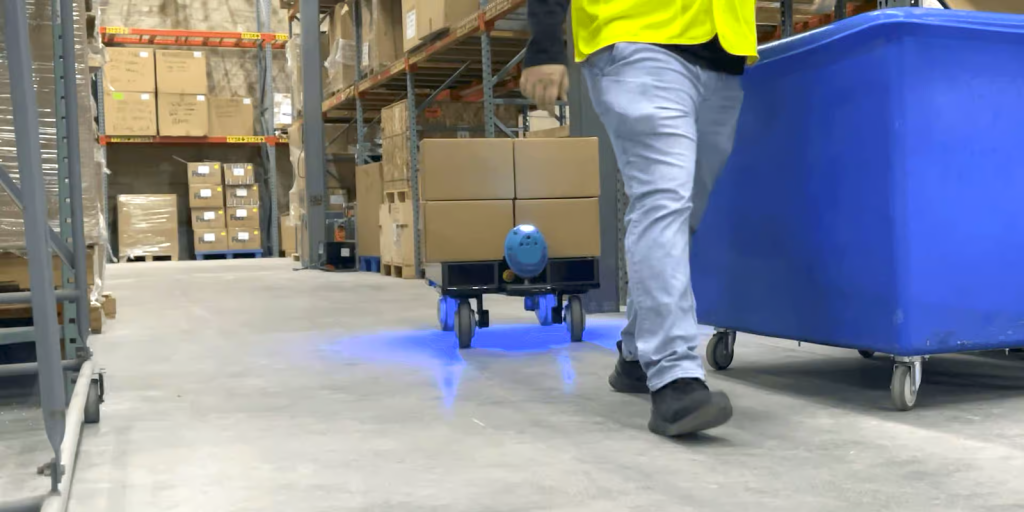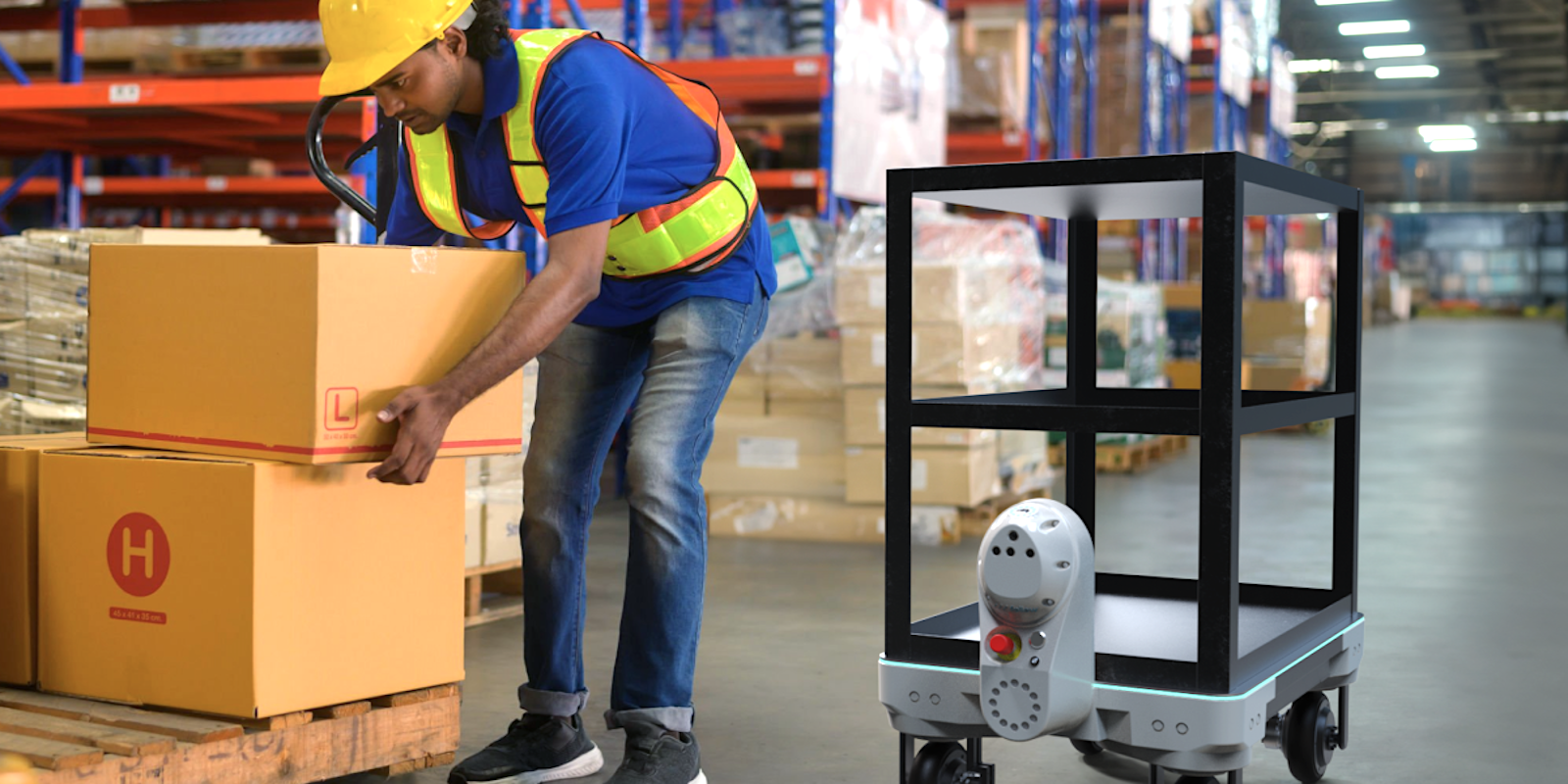Newesy Piaggio EV isn’t a Vespa – it’s an adorable robot work cart
Vespa parent company Piaggio just launched a new electric vehicle that’s loaded with advanced electronics, efficient drive systems, and the latest in autonomous technology. But don’t worry, it’s not coming for your jobs (yet).
It’s called Kilo. Developed by the Piaggio Group‘s “Fast Forward” innovation lab and launched at the Modex trade show in Atlanta, Piaggio says its new robotic cart platform was designed to help businesses, “augment their workforce and enhance worker safety.”
The Kilo robot features clever “smart follow” technology that’s designed to carry tools, boxes, and general “stuff” behind a human. It’s being pitched as a way to help prevent the sort of workplace injuries and workman’s comp claims typically associated with strenuous lifting and carrying, but the subtext (that you’ll need fewer human bodies to move stuff around your warehouse) isn’t being lost on anyone.
Piaggio, to their credit, is trying to steer the narrative away from that angle. Piaggio’s Kilo robots are, “[designed to] work alongside humans, enabling users to move materials naturally and reducing the risk of injury.”
Kilo features a 32×22 inch base and ~300 lbs. (130 kg) of carrying capacity. It can be fitted with racks and platforms to help customize it to its assigned tasks.
Your robot cart can use a suite of onboard sensors to follow you around at walking speed (3 mph) courtesy of hub-mounted electric motors in each of its four wheels, and can manage gradients up to 5 degrees. Kilo will run for up to 10 hours on a single charge, and can go from 0-100% battery capacity in about 3 hours on a standard “level 1” plug.
“From manufacturing to any industry that relies on the repetitive movement of goods across campuses and production facilities,” remarks Piaggio Fast Forward CEO, Greg Lynn, “PFF’s autonomous technology allows our robots to safely move with and around workers in complex environments, streamlining workflows and increasing productivity.”
Once Kilo’s corporate masters decide they don’t need a bunch of human buddies to serve their interests, a convoy of the little cargo-bots can be set in motion on previously-used (read: human-trained) routes using Piaggio’s “Travel on Known Paths” autonomous software, which sets a “lead” Kilo for the other Kilos to follow on up to 100 “known” paths.
A new production line for Piaggio’s Moto Guzzi brand of motorcycles (shown, at top) will mark the first “official” use for the new Kilo, followed by other Piaggio Group facilities in four countries. Customer deliveries will begin shortly thereafter.
Electrek’s Take

On the one hand, there is (and has been) a well-documented labor shortage for the kind of warehouse and construction jobs the Kilo is meant to support, which means a carryall robot like this probably makes a ton of sense from a corporate view.
That said, I think it’s a little gross that companies would rather spend millions to develop a robotic/AI solution that eliminates the need for more humans than invest that money into a well-paid, well-trained workforce with decent benefits, but no one asked me.
FTC: We use income earning auto affiliate links. More.

Vespa parent company Piaggio just launched a new electric vehicle that’s loaded with advanced electronics, efficient drive systems, and the latest in autonomous technology. But don’t worry, it’s not coming for your jobs (yet).
It’s called Kilo. Developed by the Piaggio Group‘s “Fast Forward” innovation lab and launched at the Modex trade show in Atlanta, Piaggio says its new robotic cart platform was designed to help businesses, “augment their workforce and enhance worker safety.”
The Kilo robot features clever “smart follow” technology that’s designed to carry tools, boxes, and general “stuff” behind a human. It’s being pitched as a way to help prevent the sort of workplace injuries and workman’s comp claims typically associated with strenuous lifting and carrying, but the subtext (that you’ll need fewer human bodies to move stuff around your warehouse) isn’t being lost on anyone.
Piaggio, to their credit, is trying to steer the narrative away from that angle. Piaggio’s Kilo robots are, “[designed to] work alongside humans, enabling users to move materials naturally and reducing the risk of injury.”
Kilo features a 32×22 inch base and ~300 lbs. (130 kg) of carrying capacity. It can be fitted with racks and platforms to help customize it to its assigned tasks.
Your robot cart can use a suite of onboard sensors to follow you around at walking speed (3 mph) courtesy of hub-mounted electric motors in each of its four wheels, and can manage gradients up to 5 degrees. Kilo will run for up to 10 hours on a single charge, and can go from 0-100% battery capacity in about 3 hours on a standard “level 1” plug.
“From manufacturing to any industry that relies on the repetitive movement of goods across campuses and production facilities,” remarks Piaggio Fast Forward CEO, Greg Lynn, “PFF’s autonomous technology allows our robots to safely move with and around workers in complex environments, streamlining workflows and increasing productivity.”
Once Kilo’s corporate masters decide they don’t need a bunch of human buddies to serve their interests, a convoy of the little cargo-bots can be set in motion on previously-used (read: human-trained) routes using Piaggio’s “Travel on Known Paths” autonomous software, which sets a “lead” Kilo for the other Kilos to follow on up to 100 “known” paths.
A new production line for Piaggio’s Moto Guzzi brand of motorcycles (shown, at top) will mark the first “official” use for the new Kilo, followed by other Piaggio Group facilities in four countries. Customer deliveries will begin shortly thereafter.
Electrek’s Take

On the one hand, there is (and has been) a well-documented labor shortage for the kind of warehouse and construction jobs the Kilo is meant to support, which means a carryall robot like this probably makes a ton of sense from a corporate view.
That said, I think it’s a little gross that companies would rather spend millions to develop a robotic/AI solution that eliminates the need for more humans than invest that money into a well-paid, well-trained workforce with decent benefits, but no one asked me.
FTC: We use income earning auto affiliate links. More.
